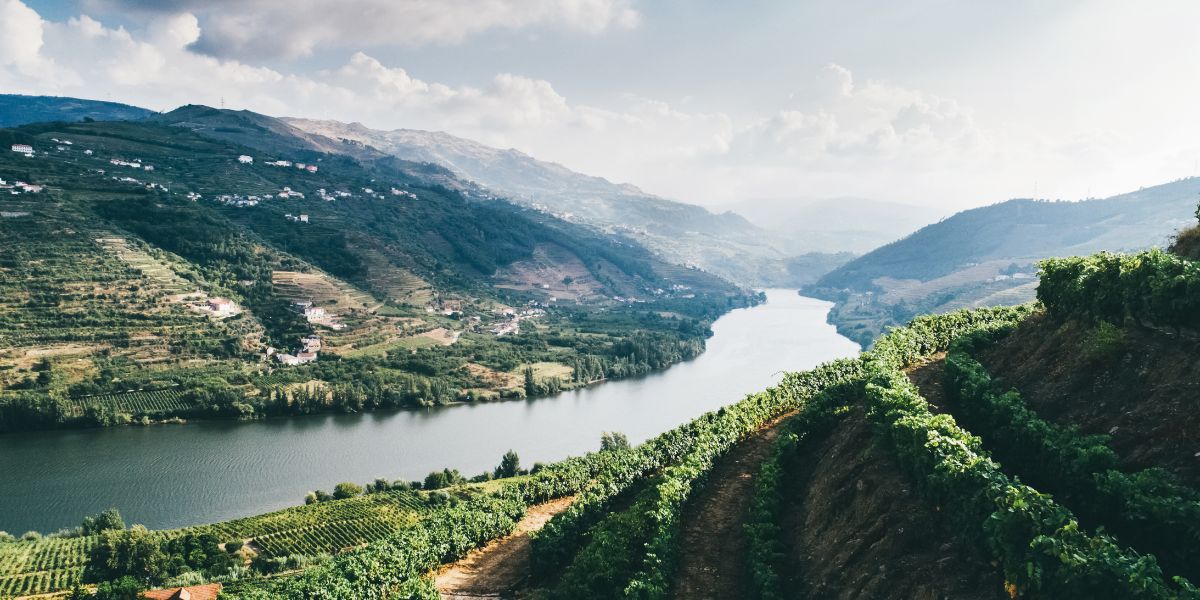Thinking About Visiting the Douro Valley Wine Region? Book Some of the Best Douro Valley Wine Tours & Wine Tastings to Experience the Region Like a Local in 2025
The Douro Valley, situated in northern Portugal, stretches from the vibrant city of Porto to the country’s eastern frontier with Spain. The region draws its name from the Douro River, which traverses this area, giving rise to some of Europe’s most awe-inspiring landscapes.
One of the best ways to experience this magical wine region is via guided wine tour led by a local. Often, these tours are led by winemakers themselves.
This year, Winetraveler has curated the best Douro Valley wine tours and wine tastings offered by our local partners in the region. We’ve made it easy for you to book any of the below tours through Viator, ensuring a secure and seamless booking experience.
NOTE: We are currently offering 15% off ALL Wine Tours booked through Winetraveler.com. Simply use coupon code WINETRAVELER15 at checkout. Note that this code is only valid for bookings made within the next 30 days, but you can still book tours later in the year as long as you schedule them now.
- Thinking About Visiting the Douro Valley Wine Region? Book Some of the Best Douro Valley Wine Tours & Wine Tastings to Experience the Region Like a Local in 2025
- Best Douro Valley Wine Tours and Wine Tastings
- More Douro Valley Wine Tours, River Cruises & Exclusive Wine Tasting Experiences
- Here's Why You Should Visit the Douro Valley Wine Region
- Douro Valley Vineyard Resorts & Wine Hotels
- Getting to and Around the Douro Valley Wine Region
- Brief History of the Douro Valley Wine Region
- Winemaking in the Douro Valley
- Gastronomy in the Douro
- Towns and Villages within the Douro Valley
- Historical Sites in the Douro Valley Wine Region
- Additional Activities and Excursions in the Douro Valley
- Best Time(s) to Visit the Douro Valley Wine Region
- Essential Tips for Traveling in the Douro Valley
- Frequently Asked Questions about Visiting the Douro Valley
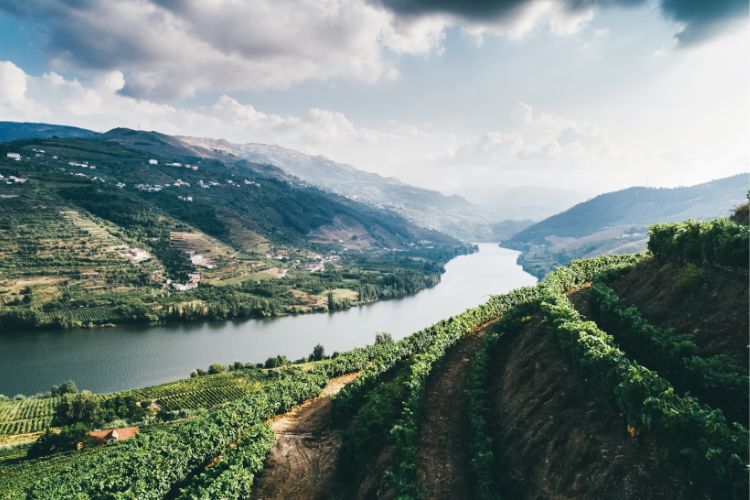
Best Douro Valley Wine Tours and Wine Tastings
Douro Valley Private Wine Tour with a Sommelier
Experience the Douro Valley through the expert guidance of a professional guide and certified sommelier, Joao Koehler. Currently priced at $313.65, this tour includes lunch, transportation in an air-conditioned vehicle, all fees and taxes, a Douro map, and a premium wine tasting.
The journey takes you through the picturesque landscapes of the Douro Valley, stopping at three distinct wineries and enjoying a world-class lunch in between. Whether you’re a wine connoisseur or a novice, this tour promises a rich, educational experience on Douro’s wine production.
You’ll have a personal touch with the local culture as Joao shares his knowledge and personal contacts, ensuring exceptional service at each stop. Along the way, enjoy breathtaking views and capture unforgettable moments. This full-day tour, lasting approximately ten hours, is highly recommended for its insightful wine education, intimate exploration, and personal attention, promising a truly unforgettable experience in the Douro Valley.
Book a Personalized Sommelier-guided Tour to the Douro Valley

Douro Valley Private Tour (All Inclusive from Porto)
Experience the heart of Portugal’s winemaking region with an all-inclusive, full-day private tour from Porto to the Douro Valley. This thoughtfully curated tour has won accolades for offering a blend of picturesque vineyard visits, Port wine tasting, a river boat trip, and a sumptuous lunch in a charming manor. The journey further extends to the traditional village of Favaios, showcasing Douro’s rich heritage.
RELATED: The Best Things to Do in the City of Porto This Year
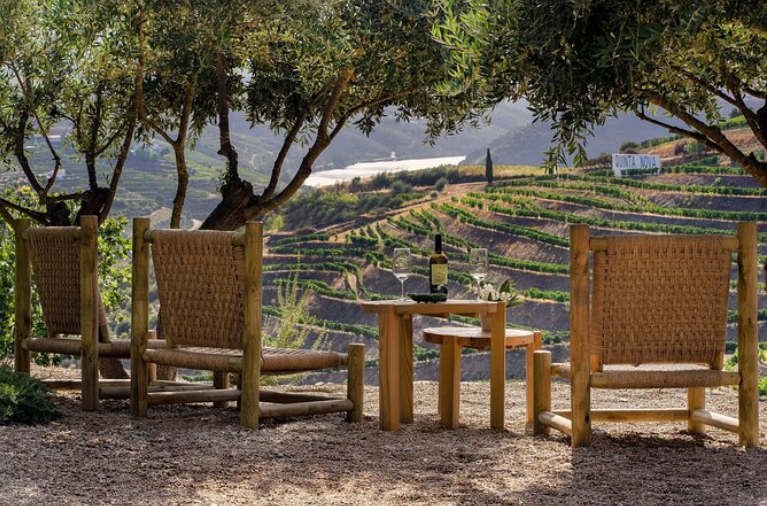
Winetravelers have praised the insightful guides for their local knowledge, engaging storytelling, and amicable nature. Francisco, André, Tiago, Nuno, Christian, Pascal are some of the guides that have been recently complimented for their exceptional service. Highlights of the tour include the wine tastings, the mesmerizing landscapes, the river cruise, an authentic lunch experience in a family-run business, and the overall charm of the Douro Valley.
What sets this tour apart is its commitment to providing a personalized, intimate experience that allows guests to explore the Douro UNESCO World Heritage Site at their own pace. This private tour promises no hidden expenses and ensures a memorable time exploring the majestic Douro Valley. It is truly an immersive, well-rounded experience that captures the essence of this magical region.
Priced from $363, Winetravelers unanimously recommend this tour for anyone looking to discover the Douro Valley’s enchanting landscape, rich wine heritage, and warm hospitality.
Book this all-inclusive wine tour of the Douro Valley right here.
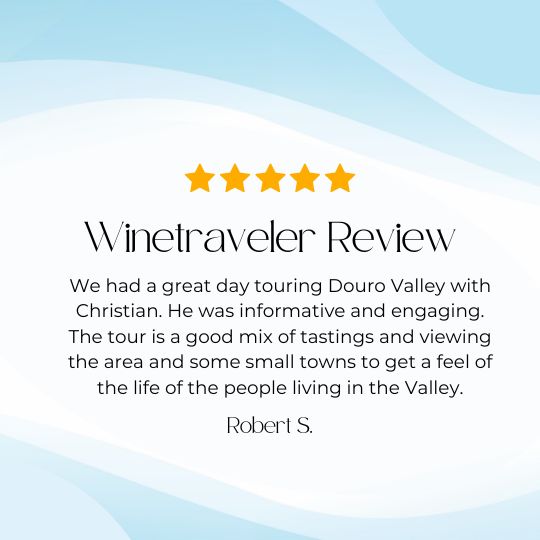
Douro Valley Private Hike & Picnic
Embark on a captivating journey with Douro Walks that intimately acquaints you with the local lifestyle and culture of the Douro Valley. This trek isn’t for the faint-hearted – with a moderate to difficult grading, this upward and downward trail spans about 7 kilometers (or 3.4 miles), boasting an elevation level of 400 meters. It’s an adventure that demands significant physical stamina and preparation.
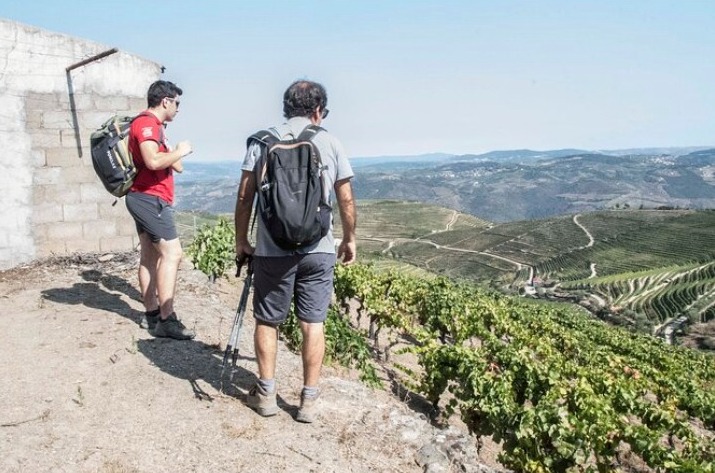
As you traverse the path, you’re introduced to the lifeblood of the Douro Valley – its extensive vineyards, olive groves, and fruit orchards. The trail starkly illustrates the backbreaking labor that goes into maintaining the verdant slopes of this region. It’s a unique chance to appreciate the rugged beauty and diligent toil that forms the foundation of this magnificent landscape.
Your rewarding climax awaits at the journey’s end – a delightful picnic set against the backdrop of the majestic Douro landscape. Here, you’re invited to savor the local flavors through homemade delicacies that truly embody the region’s culinary heritage. To complement the spread, you’re treated to the region’s quintessential Douro table wine and the internationally-renowned Port wine. The experience, overall, is an immersion into the heart and soul of the Douro Valley.
Book a Private Hike and Guided Tour in the Douro Valley
Private Off the Beaten Path Douro Valley Wine Tour
Discover the lesser-known gems of the Douro Valley with this distinctive tour, meticulously curated by Oporto & Douro Moments. This journey breaks away from the standard tourist routes, offering a fresh perspective on the region’s splendors.
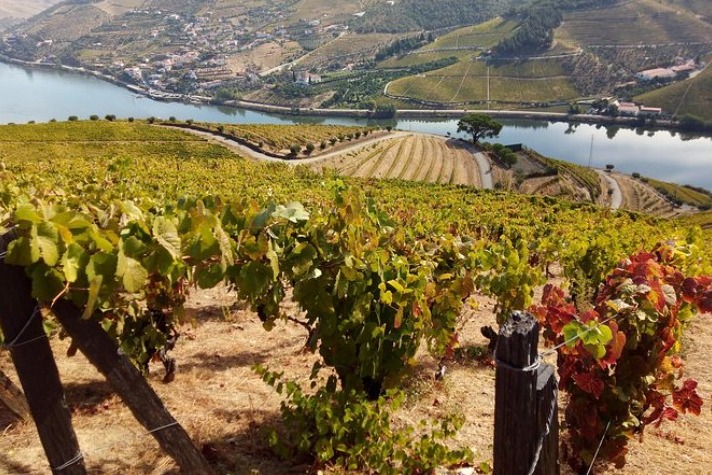
Starting from Porto, this adventure takes you into the heart of the valley’s vineyards, meandering along the picturesque Douro River. Your first port of call is a boutique winery nestled in Sabrosa – a tranquil retreat from the beaten path, where you can sample unique vintages exclusive to this establishment.
The journey continues through the rolling hills to Peso Da Regua, where you’ll pause for a self-catered lunch at yet another captivating winery. Delight in your meal amidst the breathtaking landscapes of this picturesque region.
Further on, you’ll be introduced to the charming city of Lamego, known for its architectural wonders and vinicultural heritage. Here, the warm hospitality of a family-owned wine estate awaits you, offering yet more opportunities for tantalizing wine tastings.
This private tour, led by a licensed guide, is a rich source of knowledge about the famed Port wines and the valley’s intriguing history. Not only does this guided experience include two expertly selected winery visits and wine tastings, but it also offers the comfort of pick-up and drop-off from Porto hotels in a private air-conditioned vehicle. Let Oporto & Douro Moments illuminate the road less traveled in the Douro Valley, creating memories that are as unique as the tour itself.
Book an Off the Beaten Path Douro Valley Wine Tour
Wine Venture and Boat Trip in Douro Valley
Uncover the enchanting Douro Valley without the hassle of navigation with this intimate small-group tour, professionally operated by BL Heritage Tours. An opportunity to forge life-long friendships with other likeminded #Winetravelers.
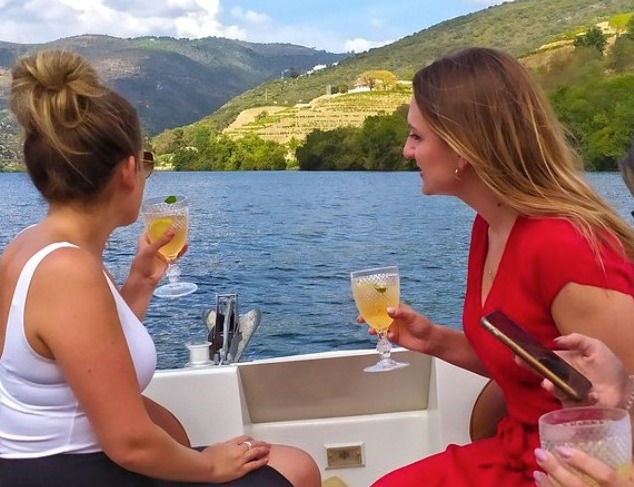
Capped at a maximum of eight participants, this tour assures personalized attention and a more engaging experience. You’ll traverse the expansive landscapes of the Douro Valley, stop at two distinguished wineries for an immersive wine tasting experience, and gain insights into the rich viticulture of this world-renowned wine region.
Your voyage also includes a serene boat ride that presents you with some of the most captivating views the valley has to offer. Gaze at the verdant vineyards terraced on the slopes, the blue ribbon of the Douro River, and the quintessential quintas dotting the landscape.
This journey through the Douro Valley wouldn’t be complete without a taste of the local cuisine. Included in the tour is a traditional Portuguese lunch, allowing you to savor the flavors that define this region.
With round-trip transportation provided from and to Porto, your excursion in the Douro Valley will be as seamless as it is memorable. Embark on this small-group tour with BL Heritage Tours for an unforgettable exploration of the Douro Valley’s wines, scenery, and culinary delights.
Book Your Douro Wine Venture and Road Trip
Authentic Douro Wine Tour Including Lunch and River Cruise
Immerse yourself in the authentic Portuguese lifestyle with this comprehensive full-day tour of the UNESCO-protected Douro Valley, professionally executed by Oporto Road Trips. Begin your journey in the comfort of an air-conditioned vehicle, escorted by a friendly and knowledgeable guide who will introduce you to the area’s history, culture, and unique winemaking tradition.
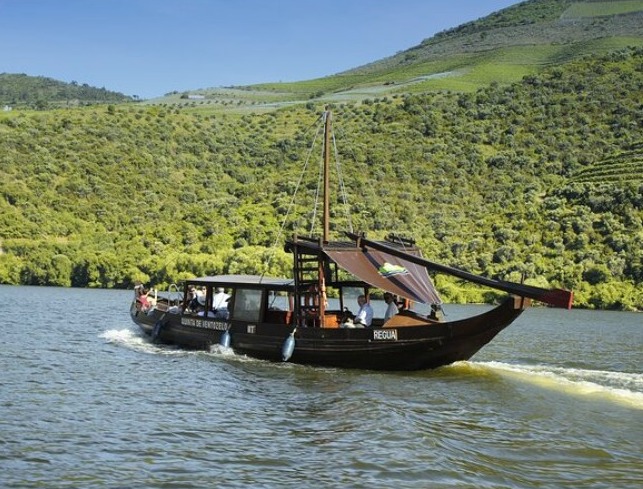
This tour offers you a diverse range of experiences, all carefully curated to highlight the most compelling aspects of the Douro Valley. Uncover the secrets of port wine production at some of the region’s most reputable wineries and take a step back in time at a historic 16th-century monastery, all while enveloped by the Valley’s stunning landscapes.
Experience the quintessential charm of Pinhão, a picturesque village at the heart of the Douro Valley. Here, you’ll pause for a delectable lunch featuring local specialties, providing a savory taste of regional cuisine.
Add a touch of tranquility to your day with a serene river cruise from Pinhão, giving you a new perspective on the Valley’s breathtaking beauty. This journey allows you to appreciate the harmonious blend of natural and man-made landscapes that have earned the Douro Valley its UNESCO status.
Return to Porto at the end of a culturally enriching and sensory-pleasing day. This tour, characterized by Oporto Road Trips’ commitment to personalized service and deep-rooted passion for Portuguese heritage, ensures you won’t miss any lesser-known landmarks and art exhibitions that most other tours might overlook. With not one, but two wine tasting sessions, this tour stands out for anyone looking to delve deeper into the Douro Valley’s rich wine culture.
Book a Douro River Cruise with Lunch and Wine
More Douro Valley Wine Tours, River Cruises & Exclusive Wine Tasting Experiences
Here’s Why You Should Visit the Douro Valley Wine Region
Renowned for its striking natural beauty, the Douro Valley is replete with a a dramatic topography of steep hills blanketed with vineyards. These terraces, painstakingly shaped over centuries, undulate across the valley, creating a stunning contrast with the deep blue ribbon of the Douro River. It’s a sight that evolves with the seasons, from lush green in spring and summer to a painter’s palette of gold and red in autumn.

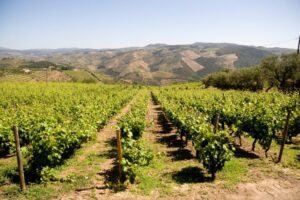

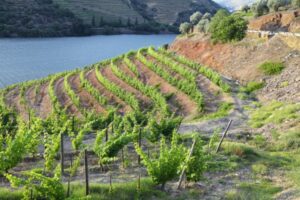
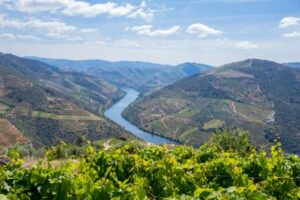
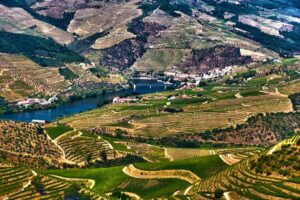
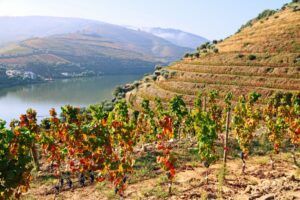
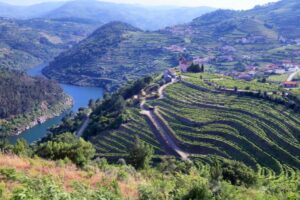
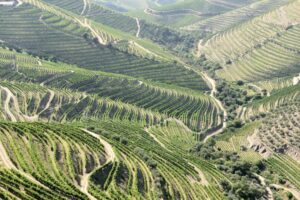
But the Douro Valley’s significance extends beyond its visual allure. It’s a place of cultural and historical importance, recognized by UNESCO as a World Heritage Site. The region’s vineyards are not merely fields of grapevines but a testament to generations of winemakers who have mastered the challenging terrain to produce wines that have captivated the world.
While the Douro Valley is famous as the birthplace of Port wine, it’s also home to exceptional red and white wines. The region’s unique microclimate and soil composition contribute to the distinctive character of these wines. The reds, made predominantly from Touriga Nacional, Tinta Roriz, and Touriga Franca grapes, are known for their robust structure and complex flavors. On the other hand, the whites, often composed of Viosinho, Rabigato, and Codega do Larinho, are praised for their refreshing acidity and aromatic profiles.
Douro Valley’s towns and villages, each with their unique charm, uphold enduring traditions, contributing to a vibrant local culture that’s as engaging as the region’s natural and viticultural appeal.
So, as you plan your visit to the Douro Valley, anticipate an encounter with breathtaking landscapes, rich cultural heritage, and a world of wines that goes beyond the famed Port to include memorable reds and whites. This is a region where nature’s splendor, historical richness, and a cherished wine tradition come together to create a truly unique travel experience.
Douro Valley Vineyard Resorts & Wine Hotels
Six Senses Douro Valley
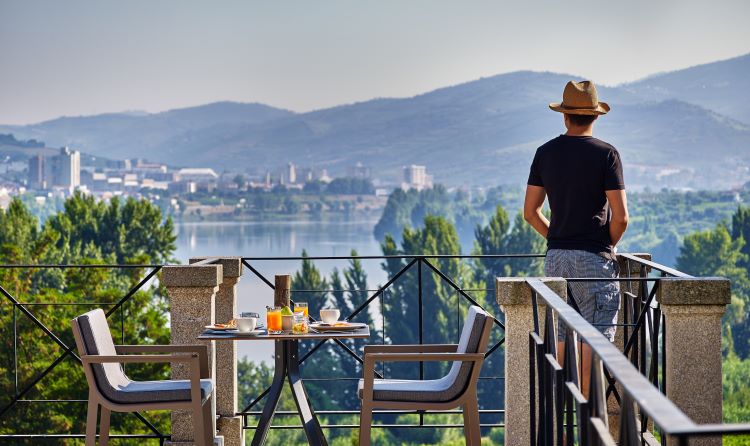
The Six Senses Douro Valley is a luxurious wine resort that seamlessly combines 19th-century romantic architecture with modern interiors, making it a perfect retreat in the heart of the world-famous wine region. With an award-winning spa, indoor and outdoor pools, and a wine library featuring local vintages, you can enjoy the ultimate #Winetraveler experience.
RELATED: The Top Luxury Wine Hotels & Vineyard Resorts to Stay at Around the World
The hotel also offers unique dining experiences featuring organic produce from the verdant valley and hotel’s garden. Each room offers stunning views of the vineyards and the Douro River, promising an unforgettable stay.
Book your stay at Six Senses Douro Valley to elevate your wine journey with luxury and comfort.
The Vintage House
Nestled in the quaint village of Pinhão, The Vintage House is a charming hotel that was once an 18th-century wine estate. Its location on the banks of the Douro River offers stunning views, and the hotel is surrounded by famous vineyards, making it ideal for Winetravelers. It features a restaurant serving traditional Portuguese cuisine, a bar with an extensive selection of Douro wines, and elegant, comfortable rooms. Wine-themed activities, such as tastings and vineyard tours, are also available.
Reserve your room at The Vintage House and experience the heart of the Douro Valley’s wine culture.
Quinta da Pacheca
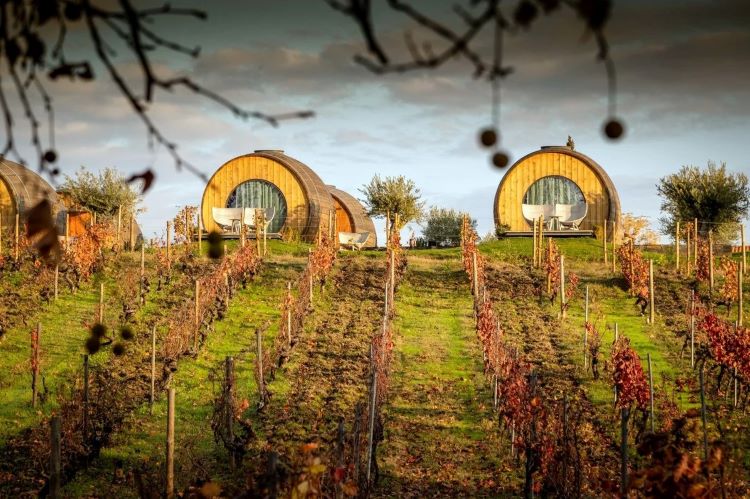
Quinta da Pacheca is one of the oldest wine estates in the Douro Valley, renowned for its vineyard-covered rolling hills and wine production. The hotel offers a unique experience, where you can stay in innovative wine barrel rooms right in the middle of the vineyard. The property also has a gourmet restaurant that serves dishes prepared with local ingredients, paired with the estate’s own wines. Guests can participate in various activities, including wine tastings, winemaking workshops, and vineyard tours.
Experience a stay like no other by booking your visit at Quinta da Pacheca.
Smooth Sailing: Booking Douro Valley Hotels and Budget Planning Tips
When planning your stay in the Douro Valley, it’s important to book your accommodations in advance, especially during the peak summer months. Prices can vary widely depending on the time of year and type of accommodation, so it’s wise to set a budget and research options within your price range early on.
Keep in mind that many accommodations also offer packages that may include meals, winery tours, or other activities, providing added value. In short, with a bit of advance planning, you’ll find the perfect base from which to explore all that the Douro Valley has to offer. Besides the hotels we recommended above, you can browse additional Douro Valley hotel options right here.
Getting to and Around the Douro Valley Wine Region
Reaching the Douro Valley is a fairly straightforward affair, with several transportation options available depending on your point of origin and preference.
Flying into Portugal, you’ll likely land at Francisco Sá Carneiro Airport in Porto, the closest international airport to the Douro Valley. From here, you can choose between a variety of transport modes. Browse and compare flight prices and book into Porto right here using Kayak.
If you prefer to drive, car rentals are available at the airport, and the journey to the Douro Valley takes approximately 1.5 hours via the A4 motorway. This gives you the freedom to navigate the region at your leisure, stopping off at scenic spots or charming villages along the way. Just remember, driving in the Douro Valley can be a challenge with its winding roads and steep hills, so be prepared if you’re not accustomed to such conditions.
For those who’d rather sit back and enjoy the view, taking a train from Porto’s São Bento station is a delightful option. The journey to Peso da Régua, a town in the heart of the Douro Valley, takes about 2 hours, with the route offering some truly spectacular river views.
Alternatively, bus services operate from Porto to various towns in the Douro Valley. Although this option might take a bit longer due to the indirect routes, it’s often a more economical choice.
As we’ve mentioned above, given the Douro Valley wine region’s proximity to Porto, plenty of Douro Valley wine tour options are available to book that take care of all of the logistics and driving on a day trip from Porto.
For a unique experience, consider a river cruise up the Douro River. This is a fantastic way to absorb the region’s stunning landscapes from a different perspective. Keep in mind, however, that cruises typically operate between spring and fall due to weather conditions.
Once in the region, getting around can be accomplished by car, local bus services, or even on foot for those located in the heart of a town. Yet, the most immersive way to explore the vineyards might be by hiking or biking through the region’s intricate trails.
Regardless of your chosen transport, remember that the Douro Valley’s beauty is in its serenity and rustic charm. Take your time, plan your routes in advance, and most importantly, soak in the enchanting vistas that unfold with every turn.
Brief History of the Douro Valley Wine Region
The Douro Valley carries a rich historical legacy, its story woven into the steep terraced vineyards that line the riverbanks and the traditions upheld by its people. Its significance extends far beyond its geographical boundaries, with a history deeply rooted in viticulture and an enduring cultural heritage.
The Douro Valley’s viticultural history dates back over 2,000 years, with the Romans being the first to introduce organized grape cultivation in the region. But it was in the 17th century that the region truly gained international recognition, with the emergence of Port wine. This sweet, fortified wine became highly sought-after, particularly in England, transforming the Douro Valley into a vital economic region for Portugal.
The cultivation techniques used in the valley evolved over time to adapt to the challenging terrain. The steep slopes and rocky soil required innovative solutions, leading to the construction of stone-walled terraces known as “socalcos”. These terraces, still in use today, are a testament to the ingenuity and resilience of the Douro winegrowers.
In 2001, the Douro Valley’s historical and cultural significance was recognized internationally when it was designated a UNESCO World Heritage Site. This status acknowledges the valley’s unique landscape, which has been shaped by human activities, mainly viticulture, for centuries. The designation also attests to the region’s cultural wealth, including architectural monuments, archaeological sites, and intangible heritage such as folklore, festivals, and traditional practices.
Being a UNESCO World Heritage Site brings responsibilities along with the recognition. The valley is now subject to international standards of conservation to protect its cultural landscape. This means ensuring sustainable development, preserving traditional cultivation practices, and maintaining the balance between nature and human activities.
Winemaking in the Douro Valley
Viticulture is the lifeblood of the Douro Valley, its tradition and significance deeply embedded in the fabric of the region. It’s here, amid the dramatic, terraced landscape, where the art of winemaking not just flourishes, but thrives in its full glory.
At the heart of the region’s winemaking legacy is Port wine. Born from a unique combination of the Douro Valley’s terroir and centuries-old winemaking techniques, Port is a fortified wine, rich, sweet, and often enjoyed as a dessert wine. It gained prominence in the 17th century when England, amidst a political conflict with France, began importing this robust wine from Portugal. The Douro Valley’s vineyards were swiftly demarcated for the production of this now-famed wine, making it the world’s first officially designated wine region.
Port wine comes in several styles, the most common being Ruby and Tawny. Ruby Port is known for its rich, fruity flavors and deep red color, while Tawny Port, aged in wooden barrels, is characterized by its nutty flavors and amber hue. There’s also Vintage Port, considered the finest of all, made from the best grapes of a single exceptional year and aged in the bottle for many years.
Though renowned for Port, the Douro Valley is no one-trick pony. The region also produces outstanding red and white still wines. Reds are typically robust, with dense fruit flavors, while whites are often fresh and aromatic, showcasing the versatility of the region’s indigenous grape varieties.
As you traverse the Douro Valley, you’ll find an array of quintas (wine estates) open for visits and tastings. Some of the prominent ones include Quinta do Noval, known for its top-notch Vintage Ports; Quinta do Crasto, acclaimed for both its high-quality Ports and still wines; and Quinta de La Rosa, a family-run estate offering a diverse range of wines, including the increasingly popular Douro reds.
Gastronomy in the Douro
In the Douro Valley, the gastronomic experience is as integral to the region’s charm as its sweeping landscapes and esteemed wines. The local cuisine, much like its viticulture, is a testament to the region’s bounty and the local people’s culinary craft.
The gastronomy of the Douro Valley is deeply rooted in its land, utilizing the freshest local produce, meat, and fish. It’s a hearty cuisine, with robust flavors and generous portions that pair wonderfully with the region’s wines. Whether it’s the succulent meats, fresh river fish, or garden-grown vegetables, each dish tells a story of the region’s agricultural abundance and culinary traditions.
A gastronomic tour of the Douro Valley wouldn’t be complete without tasting some of its iconic dishes. Try the ‘Posta à Mirandesa’, a thick, juicy steak sourced from local cattle and grilled to perfection, or the ‘Bacalhau à Braga’, a codfish dish served with crispy potato matchsticks. For the adventurous palate, ‘Cabrito assado no forno’ or roast goat is a local delicacy often prepared for celebrations and special occasions. Don’t forget to finish your meal with a local sweet treat, like ‘Toucinho do céu’, a rich almond cake.
When it comes to dining, the Douro Valley offers a diverse range of options, from family-run taverns to luxurious wine estate restaurants. DOC (Cais da Folgosa, Estrada Nacional 222, 5110-214 Folgosa, Portugal: +351 254 858 123), located on the banks of the Douro River, offers gourmet cuisine with a contemporary twist, and their wine list is simply superb.
At the rustic Tasca da Quinta (R. do Marquês de Pombal 42 R/C, 5050-282 Peso da Régua, Portugal: +351 962 800 873), you’ll find traditional dishes that take you on a culinary journey through the region’s flavors.
For an elevated dining experience, visit The Vintage House Hotel’s Rabelo restaurant, where you can enjoy excellent local cuisine complemented by stunning river views.
Towns and Villages within the Douro Valley
Within the rolling landscapes of the Douro Valley lie a collection of towns and villages, each with its unique charm and historical significance. These locations, rich in culture and heritage, offer a delightful diversion from the vineyard tours and wine tastings, presenting an authentic glimpse into local life.
Peso da Régua
Often simply referred to as Régua, this town is considered the commercial hub of the Douro Valley. Once a significant port for the shipment of Port wine, today, it’s the epicenter of the region’s wine trade. The town’s main attraction is the Douro Museum, providing an insightful look into the history and culture of the Douro Valley. Also, don’t miss the chance to stroll along the riverside promenade with its beautiful views of the Douro River.
Pinhão
Next is Pinhão, a small town with a big wine reputation. It’s the geographic heart of the demarcated Port wine region and is home to many famous wine estates. The town’s railway station is a unique attraction, adorned with beautiful blue and white tiles (azulejos) that depict the region’s vineyard landscapes and grape harvest scenes. Pinhão is also a popular starting point for river cruises, offering breathtaking vistas of the terraced vineyards.
Foz Coa
Foz Coa might be a bit off the beaten path but is no less impressive. It’s known for the Côa Valley Archaeological Park, a UNESCO World Heritage Site featuring Paleolithic rock carvings. The town is also home to a renowned winery, Quinta do Vale Meão, that carries a rich winemaking history.
Historical Sites in the Douro Valley Wine Region
Archaeological Park of the Côa Valley: Stepping Back in Time
The Douro Valley is not only famous for its viticulture but also its rich historical and archaeological sites. At the forefront is the Archaeological Park of the Côa Valley, a UNESCO World Heritage Site housing thousands of Paleolithic engravings scattered along the Côa River. Unearthed in the late 20th century, these outdoor rock art galleries offer glimpses into the lives and imagination of our prehistoric ancestors. Tours of this fascinating site are available both during the day and at night, each presenting a unique perspective of these ancient etchings.
Significant Historical Landmarks and Sites
Beyond the Côa Valley, the Douro region boasts a wealth of other historical sites and landmarks. Castles and fortresses such as the Castle of Numão and the Castle of Moncorvo stand as majestic vestiges of a turbulent past, while religious sites like the Sanctuary of Our Lady of Remedies in Lamego offer quiet reflection amid splendid baroque architecture.
In addition, various Roman ruins and medieval bridges dot the landscape, each telling their own tale of bygone eras.
Museums and Cultural Centers: Immersion into Douro’s History and Art
Complementing these ancient sites, numerous museums and cultural centers across the Douro Valley allow visitors to delve deeper into the region’s cultural heritage. The Douro Museum in Peso da Régua is an essential stop, offering insights into the valley’s wine-making traditions and history.
Additionally, the Casa de Mateus in Vila Real houses an impressive collection of 17th- and 18th-century artifacts.
For art enthusiasts, contemporary art can be admired at the Quinta da Leda’s art center, while traditional Portuguese music and dance come alive at the region’s frequent cultural festivals.
Additional Activities and Excursions in the Douro Valley
Embracing the Outdoors: Popular Activities in Douro
The Douro Valley, with its natural beauty and varied landscapes, offers countless opportunities for outdoor activities. Hiking trails, ranging from easy walks to more challenging routes, meander through vineyards, olive groves, and traditional villages, allowing visitors to experience the region’s natural beauty firsthand.
River cruises on the Douro River offer another perspective on the valley, with various options available, from shorter trips to multi-day journeys, and often include winery visits and onboard wine tastings.
Thrilling Adventures: Embrace Your Inner Adrenaline Junkie
For those seeking more adrenaline-fueled experiences, the Douro Valley does not disappoint. Mountain biking trails abound, catering to all skill levels and offering magnificent views over the terraced vineyards.
Canoeing and stand-up paddleboarding on the Douro River provide exhilarating ways to explore the region’s waterways, while paragliding offers the opportunity to take in the valley’s breathtaking panoramas from a whole new perspective.
Discovering Douro: Guided Tours and Self-Guided Exploration
As you are now well familiar with, the Douro Valley’s rich culture and history can be experienced through various guided tours that cater to different interests, from wine and gastronomy to history and architecture.
Private tours offer personalized experiences tailored to individual preferences, while group tours offer social opportunities to meet fellow Winetravelers. For those who prefer independent exploration, the well-marked hiking trails and numerous quintas open to the public make for delightful self-guided day trips. No matter your style of travel, the Douro Valley is ripe for discovery.
Best Time(s) to Visit the Douro Valley Wine Region
Climate and Seasonal Factors: A Balanced Blend
The Douro Valley enjoys a Mediterranean climate, characterized by hot, dry summers and cool, wet winters. When planning your visit, it’s essential to consider both your comfort and the type of activities you’re interested in.
Spring (March to May) offers pleasant temperatures and the spectacle of blossoming almond trees, while summer (June to August) can be hot but brings the excitement of the grape harvest.
Autumn (September to November) is a time of striking color changes in the vineyards and more moderate temperatures, while winter (December to February) tends to be quieter, offering the chance to experience a more tranquil Douro Valley.
Seasonal Influence: Activities and Wine Production
Seasonal changes in the Douro Valley significantly impact both the available activities and the rhythm of wine production. In the summer months, you might witness the grape harvest and participate in winemaking activities, though it’s worth noting that the heat can make strenuous outdoor activities less comfortable.
Spring and fall are ideal for hiking, cycling, and exploring the landscape, with more moderate temperatures and beautiful scenery. If your focus is primarily on wine tasting and indoor cultural activities, winter can also be a great time to visit. It’s less crowded, and many quintas remain operational, offering a more intimate experience. Regardless of when you choose to visit, the Douro Valley is sure to enchant with its timeless beauty and world-renowned wines.
Essential Tips for Traveling in the Douro Valley
Embracing Local Customs and Etiquette: The Douro Dance
Understanding the local customs and etiquette will enhance your journey through the Douro Valley. Portuguese people are generally warm, friendly, and polite. A handshake is the standard greeting, and formal titles (‘Senhor’ for men and ‘Senhora’ for women) are used until a first-name basis is established.
Tipping is appreciated but not mandatory; in restaurants, a tip of around 10% is standard if you enjoyed your meal and the service. On your vineyard visits, it’s considered good etiquette to purchase a bottle of wine after a tasting, though this is not obligatory.
Currency and Language: A Simple Twist of Portuguese
The official language is Portuguese, and while English is widely spoken in tourist areas and younger generations, learning a few basic phrases in Portuguese can go a long way.
The official currency is the Euro (€), and credit cards are accepted in most places, although having some cash on hand is advisable, especially in more rural areas. ATMs, known locally as Multibancos, are widely available.
Health and Safety: A Safe Stroll through the Valley
Portugal is a very safe country to visit, with low crime rates. However, as with any destination, it’s essential to stay aware of your surroundings and keep your belongings secure. There are no specific health risks associated with the Douro Valley. Still, if you’re planning to partake in outdoor activities during the summer, ensure you stay hydrated and protected from the sun. Ensure you have travel insurance that covers medical expenses, and bring any necessary medication with you, along with a copy of your prescription.
Always drink responsibly, especially during wine tastings, and never drink and drive. The Douro Valley is a region to be savored, and taking these simple precautions will ensure your journey is as carefree as possible.
Frequently Asked Questions about Visiting the Douro Valley
You are reading “Best Douro Valley Wine Tours and Wine Tasting Experiences”: Back To Top
wine tours near me, Douro Valley wine tours, wine tasting in the Douro Valley, things to do in the Douro Valley: wine tours around the world
If you enjoyed this guide, consider joining the Facebook Group to interact with other Winetravelers and for wine travel inspiration around the world. Be sure to follow us on both Twitter and Instagram to stay up to date with our trending content.
Images throughout courtesy Greig Santos-Buch, Getty Images/iStock.
